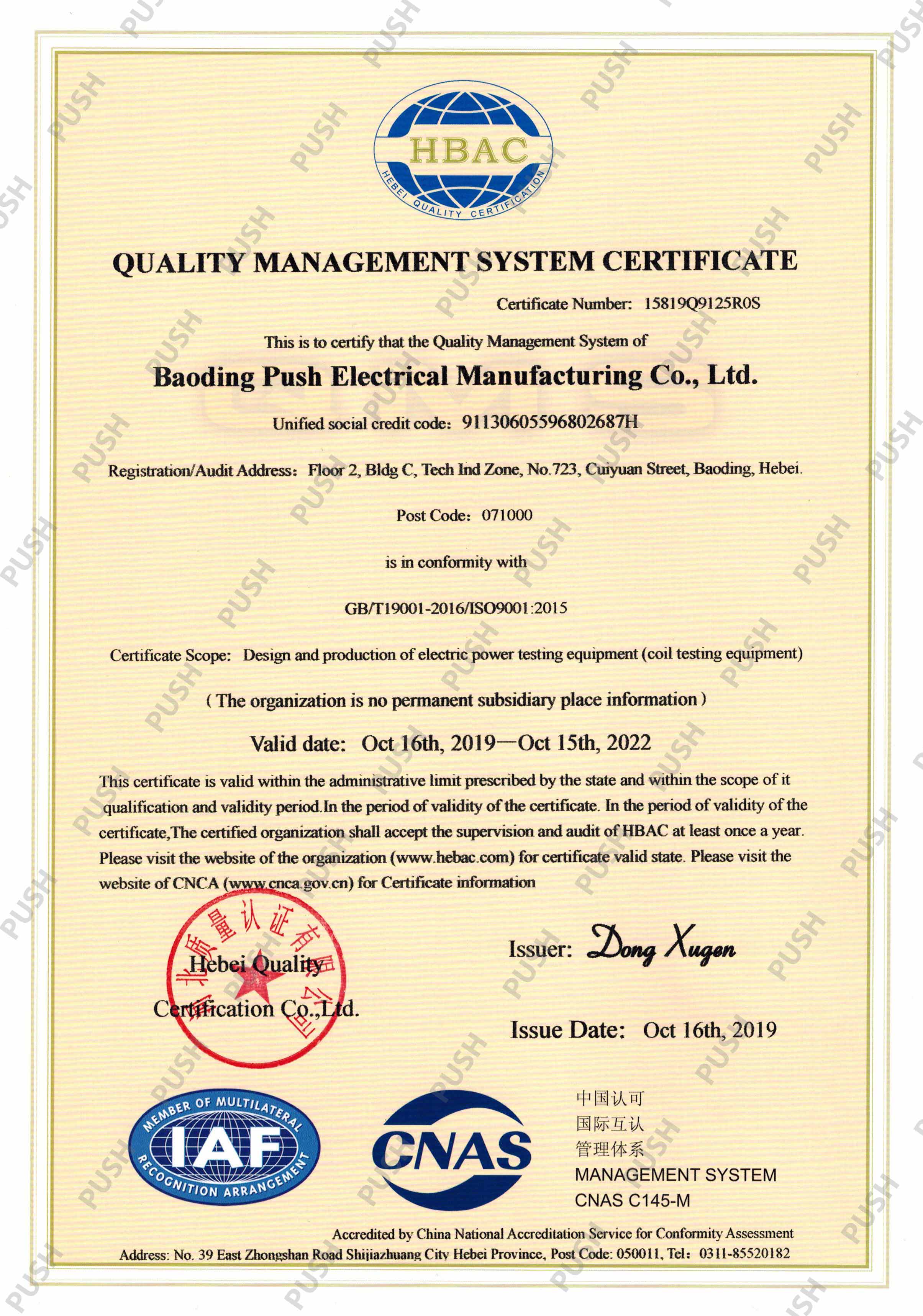 English
English


High Voltage Testing Procedures and Standards for Transformer Performance Evaluation
The High Voltage Test Performed on Transformers
Transformers play a crucial role in the electrical power distribution system by stepping up or stepping down voltage levels to ensure efficient power transmission from generating stations to end-users. To maintain their operational integrity and safety, it is essential for transformers to undergo rigorous testing, one of which is the high voltage test. This article delves into the significance, methodology, and benefits of high voltage testing in transformers.
High voltage testing is conducted to evaluate the dielectric strength and insulation quality of the transformer components. This test ensures that the transformer's insulation can withstand the electrical stresses it will face in operation. The dielectric material used in transformers, typically consisting of oil and insulating paper, is prone to degradation over time due to electrical, thermal, and environmental factors. Consequently, regular high voltage tests are vital for ensuring long-term reliability and performance.
The methodology of high voltage testing involves subjecting the transformer to voltages significantly higher than its normal operating voltage. There are various types of tests that fall under this category, including
1. Power Frequency Voltage Test This test applies a sustained high voltage at power frequency (usually 50 or 60 Hz) to the transformer for a specified duration, typically 1 to 5 minutes. The purpose is to detect insulation weaknesses and ensure that the insulating materials can handle routine voltages and surges.
2. Impulse Voltage Test This test simulates the effects of lightning strikes or switching surges on the transformer. It involves applying a short-duration, high amplitude voltage impulse. The ability of the transformer to withstand such transient voltages is critical for ensuring long-term safety and reliability.
the high voltage test which is performed on transformers

3. Partial Discharge Testing This test detects small electrical discharges that occur within the insulation system. Even minor partial discharges can indicate insulation deterioration, which may lead to catastrophic failures if not addressed. By identifying these issues early, maintenance can be performed proactively, ultimately extending the lifespan of the transformer.
4. Insulation Resistance Testing While not purely a high voltage test, insulation resistance tests complement high voltage testing by measuring the resistance of the transformer’s insulation system. High resistance values indicate good insulation performance, while low values can signal potential problems.
The benefits of conducting high voltage tests on transformers are manifold. First and foremost, these tests significantly enhance safety. By identifying insulation weaknesses before they lead to catastrophic failures, utilities can prevent electrical accidents, equipment damage, and service disruptions. Additionally, high voltage testing helps organizations comply with industry standards and regulations, ensuring that their operations meet established safety and performance criteria.
Moreover, routine high voltage testing allows for improved maintenance planning and budgeting. By detecting potential problems early, companies can schedule maintenance and repairs effectively, avoiding unplanned outages and costly emergency repairs. This proactive approach ultimately leads to cost savings and a more reliable power supply to customers.
In conclusion, the high voltage test performed on transformers is a critical aspect of ensuring their safety and reliability. By evaluating the insulation's integrity under extreme conditions, this testing process helps identify potential issues before they escalate, thereby enhancing the overall lifespan and performance of transformers in the power distribution network. As electrical grids continue to evolve, the importance of such preventive measures will only increase, making high voltage testing an indispensable practice in the industry.
-
Differences between open cup flash point tester and closed cup flash point testerNewsOct.31,2024
-
The Reliable Load Tap ChangerNewsOct.23,2024
-
The Essential Guide to Hipot TestersNewsOct.23,2024
-
The Digital Insulation TesterNewsOct.23,2024
-
The Best Earth Loop Impedance Tester for SaleNewsOct.23,2024
-
Tan Delta Tester--The Essential Tool for Electrical Insulation TestingNewsOct.23,2024





